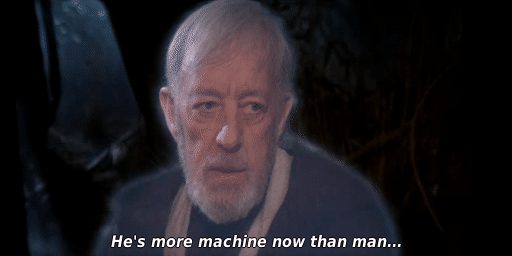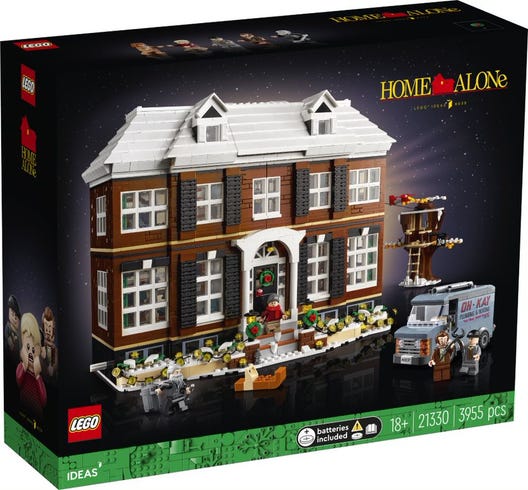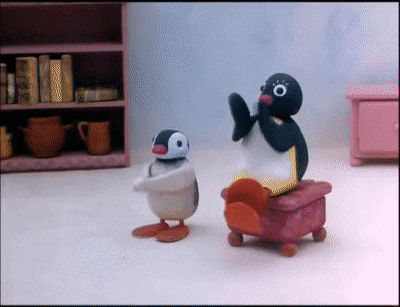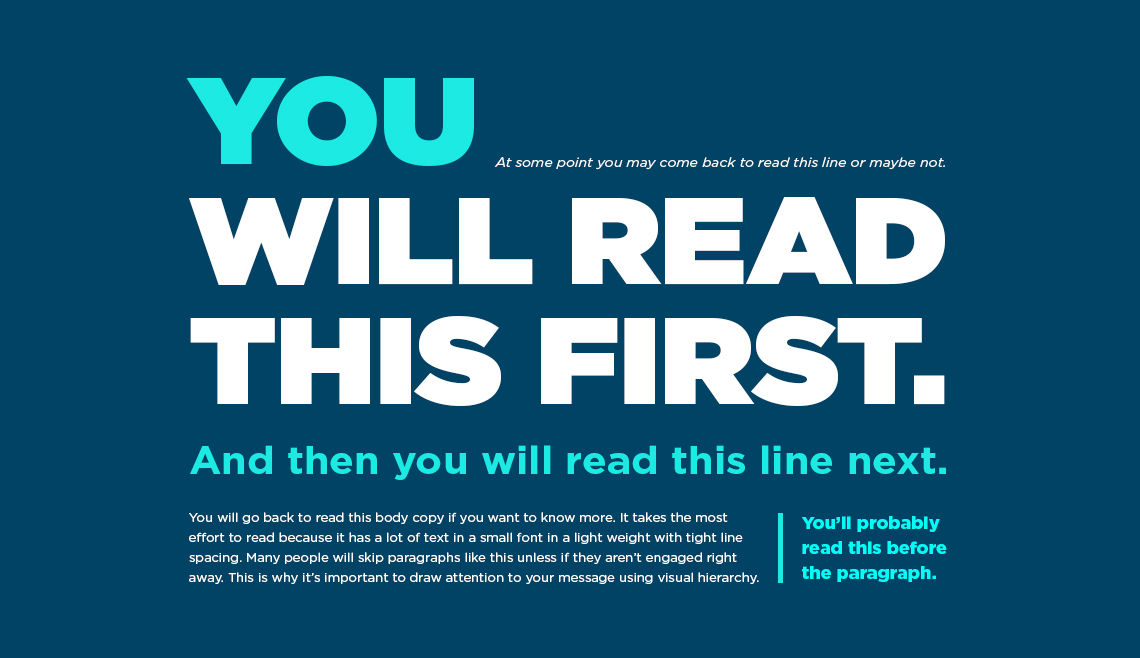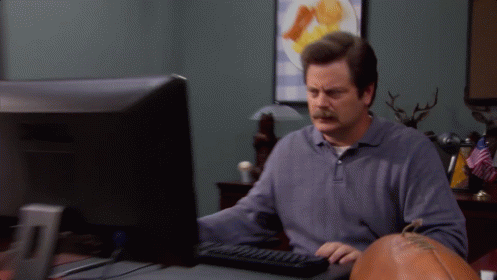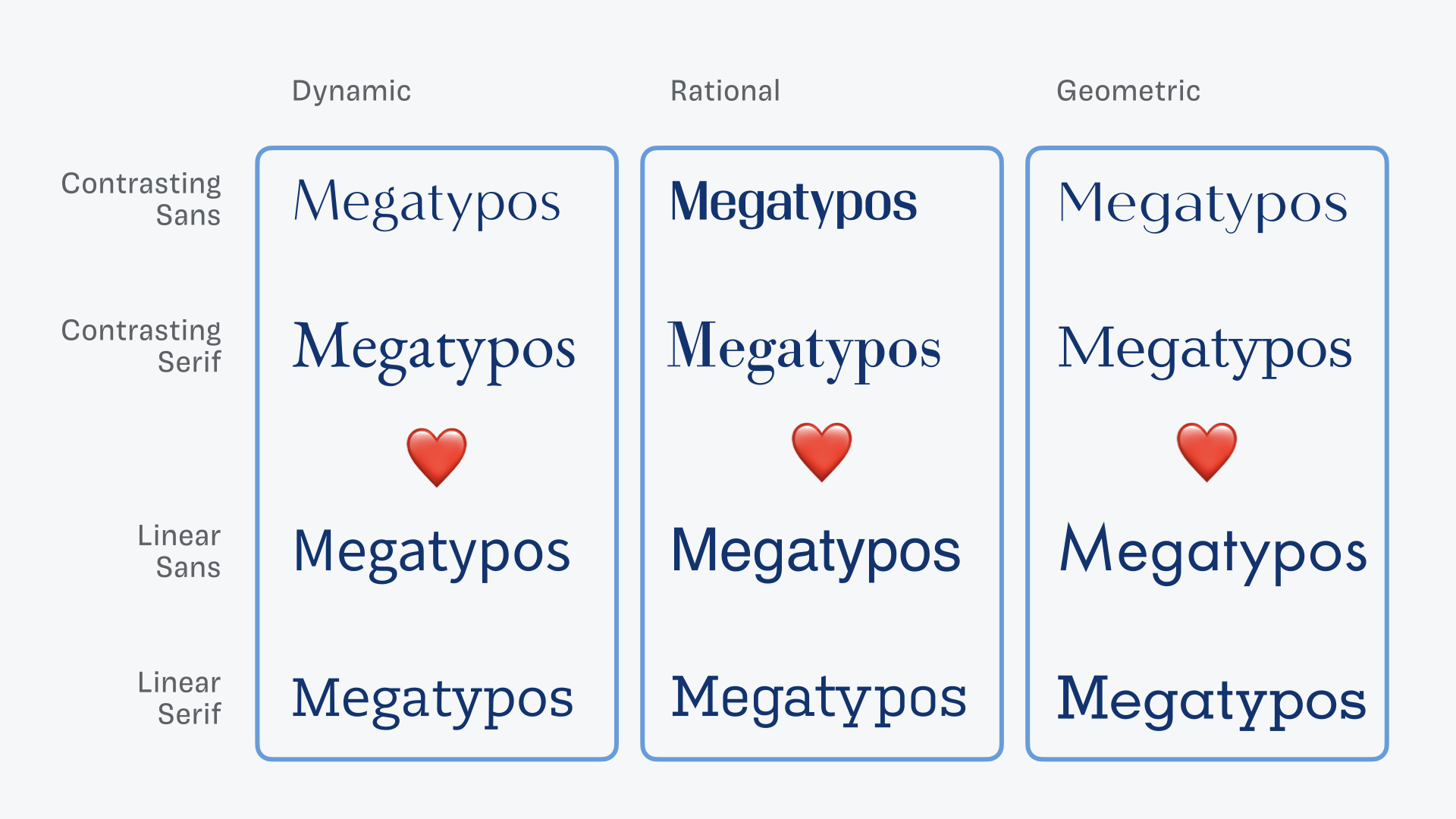Level up your plots
NHS-R 2022 | Online Workshop | 4th November 2022
Hi there 👋 !
👩 Cara Thompson
👩💻 Psychology PhD %>% Analysis of postgraduate medical examinations %>% Freelance data consultant specialising in dataviz and “enhanced” reproducible outputs
💙 Helping others maximise the impact of their expertise
Find out more: cararthompson.com/about
Today’s goal
To equip you with design tips and coding tricks to enhance the story-telling capabilities of your plots.
A mix of talk, live coding and exercises
- Part 1: Using colour and orientations to make the story easier to remember
- Part 2: Adding colour and hierarchy to text, to keep the main thing the main thing
- Part 3: Annotating the plot to highlight key information
- Bonus track: Sources of inspiration + Q&A about your own plots
Introductions
- I’m… and I work in…
- I mostly use
Rfor… - My favourite type of plot is…
- The thing I find most challenging when creating a plot is…
Today’s goal
To equip you with design tips and coding tricks to enhance the story-telling capabilities of your plots.
A mix of talk, live coding and exercises
- Part 1: Using colour and orientations to make the story easier to remember
- Part 2: Adding colour and hierarchy to text, to keep the main thing the main thing
- Part 3: Annotating the data to highlight key information
- Bonus track: Sources of inspiration + Q&A about your own plots
But first, please suspend all disbelief…

The Great Penguin Bake Off
The penguins had a baking competition to see which species could make the best banana loaf. Each species was given bananas of a different level of ripeness.

The Great Penguin Bake Off
The penguins had a baking competition to see which species could make the best banana loaf. Each species was given bananas of a different level of ripeness.

The Great Penguin Bake Off
The Adelie penguins decided to experiment with different quantities of banana in their mix. Each island chose a different quantity.

The Great Penguin Bake Off
The Adelie penguins decided to experiment with different quantities of banana in their mix. Each island chose a different quantity.

The Great Penguin Bake Off
The penguins also baked their cakes for different amounts of time. Here are the mean durations per species. Which species left their cakes in the oven for longest?

The Great Penguin Bake Off
The penguins also baked their cakes for different amounts of time. Here are the mean durations per species. Which species left their cakes in the oven for longest?


Seven tips to level up your plots
#1 - Use colour (and transparency) purposefully
#2 - Use intuitive orientations
Seven tips to level up your plots
#1 - Use colour (and transparency) purposefully
#2 - Use intuitive orientations
#3 - Add colour to text to help orient readers
#4 - Use colours and fonts to add text hierarchy
#5 - Reduce unnecessary eye movement
#6 - Highlight important data points
#7 - Give everything some space to breathe
Part 1 - Colour and orientation
#1 - Use colour purposefully
Make it easy for the readers to remember what is what.
But my research isn’t about bananas!
Let’s get coding!
A bit of housekeeping
- Using Tidyverse style (mostly!)
package::function()rather than loading whole libraries (helps us see where everything comes from!)library(tidyverse)- Apply the principles to your own plots during each exercise break - shout if you get stuck!
- For each part, there’s a script in
reference-scripts/to show where we got to
Setting up our basic plot
We first let’s modify the data, so that we have banana quantities to visualise!
library(tidyverse)
penguins <- palmerpenguins::penguins %>%
mutate(banana_quantity =
case_when(
species == "Adelie" &
island == "Biscoe" ~ 1,
species == "Adelie" &
island == "Dream" ~ 0.6,
species == "Adelie" &
island == "Torgersen" ~ 0,
TRUE ~ 1))
penguins %>%
select(species, island, banana_quantity) %>%
distinct()# A tibble: 5 x 3
species island banana_quantity
<fct> <fct> <dbl>
1 Adelie Torgersen 0
2 Adelie Biscoe 1
3 Adelie Dream 0.6
4 Gentoo Biscoe 1
5 Chinstrap Dream 1 Setting up our basic plot
Ripeness & quantities, baking duration (bill depth), yumminess (bill length)
Setting up our basic plot
Ripeness & quantities, baking duration (bill depth), yumminess (bill length)
Setting up our basic plot
Ripeness & quantities, baking duration (bill depth), yumminess (bill length)
Setting up our basic plot
Ripeness & quantities, baking duration (bill depth), yumminess (bill length)
Setting up our basic plot
Ripeness & quantities, baking duration (bill depth), yumminess (bill length)
basic_plot <- ggplot(penguins,
aes(x = bill_depth_mm,
y = bill_length_mm,
colour = species)) +
geom_point(aes(alpha = banana_quantity)) +
labs(title = "Banana loaf tastes best when baked with ripe or over-ripe bananas",
subtitle = "The Palmer Penguins carried out an experiment using bananas of different ripeness.
The Adelie penguins were given unripe bananas, Gentoos were given over-ripe
bananas and Chinstraps were given yellow bananas.
Each penguin was left to choose their own cooking time.",
x = "Baking time",
y = "Yumminess",
caption = "Data from {palmerpenguins}; misused for illustration purposes.") +
scale_alpha(range = c(0.2, 1),
breaks = c(0.1, 0.5, 1)) +
theme_minimal(base_size = 12)
basic_plot#1 - Use colour purposefully
Adelie = Unripe, Chinstrap = Ripe, Gentoo = Over-ripe
- Look for photos of bananas
- Extract colours using imagecolorpicker.com
- Banana quantity taken care of by alpha (transparency)

#1 - Use colour purposefully
The quick fix…
#1 - Use colour purposefully
… might be a dangerous shortcut!
ggplot(penguins %>%
# Oh, that should be a factor,
# let me fix that for you!
mutate(species =
factor(species,
levels = c("Chinstrap",
"Gentoo",
"Adelie"))),
aes(x = bill_depth_mm,
y = bill_length_mm,
colour = species)) +
geom_point() +
theme_minimal() +
scale_colour_manual(values = c("#89973d",
"#e8b92f",
"#a45e41"))#1 - Use colour purposefully
Create a named list!
#1 - Use colour purposefully
Create a named list!
banana_colours <- list("Adelie" = "#89973d",
"Chinstrap" = "#e8b92f",
"Gentoo" = "#a45e41")
ggplot(penguins %>%
# Oh, that should be a factor,
# let me fix that for you!
mutate(species =
factor(species,
levels = c("Chinstrap",
"Gentoo",
"Adelie"))),
aes(x = bill_depth_mm,
y = bill_length_mm,
colour = species)) +
geom_point() +
theme_minimal() +
scale_colour_manual(values = banana_colours)#1 - Use colour purposefully
Create a named list!
#1 - Use colour purposefully
Choosing colours is tricky!
Here are a few starting points…
- Your department brand guidelines
- A photo + something like imagecolorpicker.com to pick out colours
- Take inspiration from other dataviz / art you like
- Google images and “[whatever you like] palette”
- Or… start from the colour wheel and read around how best to use it
- Using a tool like paletton.com makes it easier!
Find out more: blog.datawrapper.de/colors-for-data-vis-style-guides/
#1 - Use colour purposefully
#1 - Use colour purposefully
#1 - Use colour purposefully
- Think about accessibility / printing in black and white
- Fewer colours, more light/dark shades
- From darker colours to lighter colours
- Apply semantics / consistency for clearer storytelling
#1 - Use colour purposefully
#1 - Use colour purposefully
#2 - Use intuitive orientations
#3 - Add colour to text to help orient readers
#4 - Use colours and fonts to add text hierarchy
#5 - Reduce unnecessary eye movement
#6 - Highlight important data points
#7 - Give everything some space to breathe
#1 - Use colour purposefully
#2 - Use intuitive orientations
#3 - Add colour to text to help orient readers
#4 - Use colours and fonts to add text hierarchy
#5 - Reduce unnecessary eye movement
#6 - Highlight important data points
#7 - Give everything some space to breathe
#2 - Use intuitive orientations
#2 - Use intuitive orientations
#2 - Use intuitive orientations
We’ve done this already!
#1 - Use colour purposefully
#2 - Use intuitive orientations
#3 - Add colour to text to help orient readers
#4 - Use colours and fonts to add text hierarchy
#5 - Reduce unnecessary eye movement
#6 - Highlight important data points
#7 - Give everything some space to breathe
#1 - Use colour purposefully
#2 - Use intuitive orientations
#3 - Add colour to text to help orient readers
#4 - Use colours and fonts to add text hierarchy
#5 - Reduce unnecessary eye movement
#6 - Highlight important data points
#7 - Give everything some space to breathe
Over to you!
- Check the orientation of your plot
- Choose a colour scheme
- Apply it to your plot using a named list
See you in 15 minutes! 📊 🎨 ☕
15:00
#1 - Use colour purposefully
#2 - Use intuitive orientations
#3 - Add colour to text to help orient readers
#4 - Use colours and fonts to add text hierarchy
#5 - Reduce unnecessary eye movement
#6 - Highlight important data points
#7 - Give everything some space to breathe
#1 - Use colour purposefully
#2 - Use intuitive orientations
#3 - Add colour to text to help orient readers
#4 - Use colours and fonts to add text hierarchy
#5 - Reduce unnecessary eye movement
#6 - Highlight important data points
#7 - Give everything some space to breathe
#3 - Add colour to text
Say hello to 📦 {ggtext}
#3 - Add colour to text
Say hello to 📦 {ggtext}
#3 - Add colour to text
Say hello to 📦 {ggtext}
basic_plot +
scale_colour_manual(values = banana_colours) +
labs(title = paste0(
"Banana loaf tastes best when baked with ",
"<span style=\"color:", banana_colours$Chinstrap,
"\">ripe</span> or <span style=\"color:",
banana_colours$Gentoo, "\">over-ripe</span> bananas")) +
theme(plot.title = ggtext::element_markdown())#3 - Add colour to text
When using colour, make sure the text is still readable; use “bold” if needed
basic_plot +
scale_colour_manual(values = banana_colours) +
labs(title = paste0(
"Banana loaf tastes best when baked with ",
"<span style=\"color:", banana_colours$Chinstrap,
"\">**ripe**</span> or <span style=\"color:",
banana_colours$Gentoo, "\">**over-ripe**</span> bananas")) +
theme(plot.title = ggtext::element_markdown())#3 - Add colour to text
#1 - Use colour purposefully
#2 - Use intuitive orientations
#3 - Add colour to text to help orient readers
#4 - Use colours and fonts to add text hierarchy
#5 - Reduce unnecessary eye movement
#6 - Highlight important data points
#7 - Give everything some space to breathe
#1 - Use colour purposefully
#2 - Use intuitive orientations
#3 - Add colour to text to help orient readers
#4 - Use colours and fonts to add text hierarchy
#5 - Reduce unnecessary eye movement
#6 - Highlight important data points
#7 - Give everything some space to breathe
#4 - Add text hierarchy
Find out more: https://www.interaction-design.org/
#4 - Add text hierarchy
Two more colours for our palette - Starting from the main banana colour, we go darker for dark text - We then go lighter from there to create a light text colour
dark_text <- monochromeR::generate_palette(
banana_colours$Chinstrap, "go_darker",
n_colours = 2)[2]
light_text <- monochromeR::generate_palette(
dark_text, "go_lighter",
n_colours = 3)[2]
banana_colours <- list("Adelie" = "#89973d",
"Chinstrap" = "#e8b92f",
"Gentoo" = "#a45e41",
"dark_text" = dark_text,
"light_text" = light_text)
monochromeR::view_palette(banana_colours)#4 - Add text hierarchy
Make sure they don’t appear in the legend!
basic_plot +
scale_colour_manual(values = banana_colours,
limits = force) +
labs(title = paste0(
"Banana loaf tastes best when baked with ",
"<span style=\"color:", banana_colours$Chinstrap,
"\">**ripe**</span> or <span style=\"color:",
banana_colours$Gentoo, "\">**over-ripe**</span> bananas")) +
theme(plot.title = ggtext::element_markdown())#4 - Add text hierarchy
Add a base colour and font for text
basic_plot +
scale_colour_manual(values = banana_colours, limits = force) +
labs(title = paste0(
"Banana loaf tastes best when baked with ",
"<span style=\"color:", banana_colours$Chinstrap,
"\">**ripe**</span> or <span style=\"color:",
banana_colours$Gentoo, "\">**over-ripe**</span> bananas")) +
theme(text = element_text(family = "Cabin",
colour = banana_colours$light_text),
plot.title = ggtext::element_markdown())#4 - Add text hierarchy
Override it in the title and change the font and size of the title
basic_plot +
scale_colour_manual(values = banana_colours, limits = force) +
labs(title = paste0(
"Banana loaf tastes best when baked with ",
"<span style=\"color:", banana_colours$Chinstrap,
"\">**ripe**</span> or <span style=\"color:",
banana_colours$Gentoo, "\">**over-ripe**</span> bananas")) +
theme(text = element_text(family = "Cabin",
colour = banana_colours$light_text),
plot.title = ggtext::element_markdown(colour = banana_colours$dark_text))#4 - Add text hierarchy
Shift to ggsave() to avoid disappointment when rendering output!
Text size changes between the Viewer and the exported plot, dependent on plot size and resolution. Set these before you spend too much time fine-tuning your text!
#4 - Add text hierarchy
Add a line<br>eak where needed!
basic_plot +
scale_colour_manual(values = banana_colours, limits = force) +
labs(title = paste0(
"Banana loaf tastes best when baked with ",
"<span style=\"color:", banana_colours$Chinstrap,
"\">**ripe**</span> or<br><span style=\"color:",
banana_colours$Gentoo, "\">**over-ripe**</span> bananas")) +
theme(text = element_text(family = "Cabin",
colour = banana_colours$light_text),
plot.title = ggtext::element_markdown(
size = 18,
family = "Poppins",
colour = banana_colours$dark_text,
face = "bold")
)#4 - Add text hierarchy
Apply the same principle to the axes and caption
basic_plot +
scale_colour_manual(values = banana_colours, limits = force) +
labs(title = paste0(
"Banana loaf tastes best when baked with ",
"<span style=\"color:", banana_colours$Chinstrap,
"\">ripe</span> or<br><span style=\"color:",
banana_colours$Gentoo, "\">over-ripe</span> bananas")) +
theme(text = element_text(family = "Cabin",
colour = banana_colours$light_text),
plot.title = ggtext::element_markdown(
size = 18,
family = "Poppins",
colour = banana_colours$dark_text,
face = "bold"),
axis.text = element_text(size = 6,
colour = banana_colours$light_text),
plot.caption = element_text(size = 6))#4 - Add text hierarchy
Getting custom fonts to work can be frustrating!
Install fonts locally +
{ragg}+{systemfonts}+{textshaping}+ Set graphics device to “AGG” + 🤞
See reference-scripts/02_setting-up-fonts.R to get you started!
#4 - Add text hierarchy
Choosing fonts can be tricky!
- Brand guidelines
- Datawrapper guidance - avoid fonts that are too wide/narrow!
- Websites + inspector tool
- Oliver Schöndorfer’s exploration of the Font Matrix
Find out more: pimpmytype.com/font-matrix/
#4 - Add text hierarchy
#1 - Use colour purposefully
#2 - Use intuitive orientations
#3 - Add colour to text to help orient readers
#4 - Use colours and fonts to add text hierarchy
#5 - Reduce unnecessary eye movement
#6 - Highlight important data points
#7 - Give everything some space to breathe
Over to you!
- Think about the main message of your plot
- Choose a font (or two); use
systemfonts::system_fonts()to see what’s installed already - Add some text-hierarchy colours to your colour scheme
- Apply the colours to the different
theme()elements
See you in 15 minutes! 🎨 🖋️ ☕
15:00
Part 3 - Annotations
#1 - Use colour purposefully
#2 - Use intuitive orientations
#3 - Add colour to text to help orient readers
#4 - Use colours and fonts to add text hierarchy
#5 - Reduce unnecessary eye movement
#6 - Highlight important data points
#7 - Give everything some space to breathe
#1 - Use colour purposefully
#2 - Use intuitive orientations
#3 - Add colour to text to help orient readers
#4 - Use colours and fonts to add text hierarchy
#5 - Reduce unnecessary eye movement
#6 - Highlight important data points
#7 - Give everything some space to breathe
#5 - Reduce unnecessary eye movement

#5 - Reduce unnecessary eye movement
Combine all the above to create text boxes instead of a legend!
# Create a new tibble
penguin_summaries <- palmerpenguins::penguins %>%
group_by(species) %>%
summarise(bill_depth_mm = mean(bill_depth_mm, na.rm = TRUE),
bill_length_mm = mean(bill_length_mm, na.rm = TRUE)) %>%
mutate(commentary = case_when(species == "Adelie" ~
"The Adelie penguins tried varying the amount of banana in the mix.
Turns out, even a hint of green banana is detrimental to yumminess!",
species == "Gentoo" ~
"Over-ripe bananas and typically shorter baking times.",
TRUE ~ "Ripe bananas and slightly longer cooking times."))#5 - Reduce unnecessary eye movement
Combine all the above to create text boxes instead of a legend!
basic_plot +
scale_colour_manual(values = banana_colours, limits = force) +
labs(title = paste0("Banana loaf tastes best when baked with <span style=\"color:", banana_colours$Chinstrap, "\">ripe</span> or<br><span style=\"color:", banana_colours$Gentoo, "\">over-ripe</span> bananas")) +
theme(text = element_text(family = "Cabin", colour = banana_colours$light_text),
plot.title = ggtext::element_markdown(size = 18, family = "Poppins", colour = banana_colours$dark_text, face = "bold"),
axis.text = element_text(size = 6, colour = banana_colours$light_text),
plot.caption = element_text(size = 6))#5 - Reduce unnecessary eye movement
Combine all the above to create text boxes instead of a legend!
basic_plot +
scale_colour_manual(values = banana_colours, limits = force) +
labs(title = paste0("Banana loaf tastes best when baked with <span style=\"color:", banana_colours$Chinstrap, "\">ripe</span> or<br><span style=\"color:", banana_colours$Gentoo, "\">over-ripe</span> bananas")) +
ggtext::geom_textbox(data = penguin_summaries,
aes(label = paste0(
"**Team ", species, "**",
"<br><span style = \"color:",
banana_colours$light_text,
"\">", commentary, "</span>"))) +
theme(text = element_text(family = "Cabin", colour = banana_colours$light_text),
plot.title = ggtext::element_markdown(size = 18, family = "Poppins", colour = banana_colours$dark_text, face = "bold"),
axis.text = element_text(size = 6, colour = banana_colours$light_text),
plot.caption = element_text(size = 6))#5 - Reduce unnecessary eye movement
Combine all the above to create text boxes instead of a legend!
basic_plot +
scale_colour_manual(values = banana_colours, limits = force) +
labs(title = paste0("Banana loaf tastes best when baked with <span style=\"color:", banana_colours$Chinstrap, "\">ripe</span> or<br><span style=\"color:", banana_colours$Gentoo, "\">over-ripe</span> bananas")) +
ggtext::geom_textbox(data = penguin_summaries,
aes(label = paste0(
"**Team ", species, "**",
"<br><span style = \"color:",
banana_colours$light_text,
"\">", commentary, "</span>")),
family = "Cabin",
size = 3.5,
width = unit(9, "line"),
alpha = 0.9,
box.colour = NA) +
theme(text = element_text(family = "Cabin", colour = banana_colours$light_text),
plot.title = ggtext::element_markdown(size = 18, family = "Poppins", colour = banana_colours$dark_text, face = "bold"),
axis.text = element_text(size = 6, colour = banana_colours$light_text),
plot.caption = element_text(size = 6))#5 - Reduce unnecessary eye movement
Combine all the above to create text boxes instead of a legend!
basic_plot +
scale_colour_manual(values = banana_colours, limits = force) +
labs(title = paste0("Banana loaf tastes best when baked with <span style=\"color:", banana_colours$Chinstrap, "\">ripe</span> or<br><span style=\"color:", banana_colours$Gentoo, "\">over-ripe</span> bananas"),
subtitle = "The Palmer Penguins carried out an experiment using bananas of different ripeness.
Each penguin was left to choose their own cooking time.") +
ggtext::geom_textbox(data = penguin_summaries,
aes(label = paste0(
"**Team ", species, "**",
"<br><span style = \"color:",
banana_colours$light_text,
"\">", commentary, "</span>")),
family = "Cabin",
size = 3.5,
width = unit(9, "line"),
alpha = 0.9,
box.colour = NA) +
theme(text = element_text(family = "Cabin", colour = banana_colours$light_text),
plot.title = ggtext::element_markdown(size = 18, family = "Poppins", colour = banana_colours$dark_text, face = "bold"),
axis.text = element_text(size = 6, colour = banana_colours$light_text),
plot.caption = element_text(size = 6),
legend.position = "none")#5 - Reduce unnecessary eye movement
#1 - Use colour purposefully
#2 - Use intuitive orientations
#3 - Add colour to text to help orient readers
#4 - Use colours and fonts to add text hierarchy
#5 - Reduce unnecessary eye movement
#6 - Highlight important data points
#7 - Give everything some space to breathe
#1 - Use colour purposefully
#2 - Use intuitive orientations
#3 - Add colour to text to help orient readers
#4 - Use colours and fonts to add text hierarchy
#5 - Reduce unnecessary eye movement
#6 - Highlight important data points
#7 - Give everything some space to breathe
#6 - Highlight important data points
To find the coordinates of the points you want to highlight, try plotly::ggplotly()!
#6 - Highlight important data points
First, a bit of text manipulation!
penguin_highlights <- palmerpenguins::penguins_raw %>%
# Housekeeping
janitor::clean_names() %>%
rename(bill_depth_mm = culmen_depth_mm,
bill_length_mm = culmen_length_mm) %>%
# Find star baker, runner up and lowest score
filter(bill_length_mm %in% c(max(bill_length_mm, na.rm = TRUE),
sort(bill_length_mm, decreasing = TRUE)[2],
min(bill_length_mm, na.rm = TRUE))) #6 - Highlight important data points
First, a bit of text manipulation!
penguin_highlights <- palmerpenguins::penguins_raw %>%
janitor::clean_names() %>%
rename(bill_depth_mm = culmen_depth_mm,
bill_length_mm = culmen_length_mm) %>%
filter(bill_length_mm %in% c(max(bill_length_mm, na.rm = TRUE),
sort(bill_length_mm, decreasing = TRUE)[2],
min(bill_length_mm, na.rm = TRUE))) %>%
# More housekeeping
mutate(species = gsub("(.) (.*)", "\\1", species))#6 - Highlight important data points
First, a bit of text manipulation!
penguin_highlights <- palmerpenguins::penguins_raw %>%
janitor::clean_names() %>%
rename(bill_depth_mm = culmen_depth_mm,
bill_length_mm = culmen_length_mm) %>%
filter(bill_length_mm %in% c(max(bill_length_mm, na.rm = TRUE),
sort(bill_length_mm, decreasing = TRUE)[2],
min(bill_length_mm, na.rm = TRUE))) %>%
mutate(species = gsub("(.) (.*)", "\\1", species),
# Add commentary!
commentary = case_when(
bill_length_mm == max(bill_length_mm) ~
paste0("Our star baker is **", individual_id,
"**, a ", species, " from ", island,
". Congratulations, ", individual_id, "!"),
bill_length_mm == sort(bill_length_mm, decreasing = TRUE)[2] ~
paste0("Our runner up is a ", species,
" from ", island, ": **", individual_id,
"**, proving that ripe and over-ripe bananas are both good options!"),
TRUE ~ paste0("**", individual_id,
"**, did not have a good baking day. The combination of short cooking time and green bananas probably didn't help!")))#6 - Highlight important data points
Next, let’s work out where we want our labels…

#6 - Highlight important data points
… and add box coordinates and text alignment to our data
penguin_highlights <- palmerpenguins::penguins_raw %>%
janitor::clean_names() %>%
rename(bill_depth_mm = culmen_depth_mm,
bill_length_mm = culmen_length_mm) %>%
filter(bill_length_mm %in% c(max(bill_length_mm, na.rm = TRUE),
sort(bill_length_mm, decreasing = TRUE)[2],
min(bill_length_mm, na.rm = TRUE))) %>%
# more housekeeping!
arrange(bill_length_mm) %>%
mutate(species = gsub("(.) (.*)", "\\1", species),
commentary = case_when(
bill_length_mm == max(bill_length_mm) ~
paste0("Our star baker is **", individual_id, "**, a ", species, " from ", island, ". Congratulations, ", individual_id, "!"),
bill_length_mm == sort(bill_length_mm, decreasing = TRUE)[2] ~
paste0("Our runner up is a ", species, " from ", island, ": **", individual_id, "**, proving that ripe and over-ripe bananas are both good options!"),
TRUE ~ paste0("**", individual_id, "**, did not have a good baking day. The combination of short cooking time and green bananas probably didn't help!")),
# Add label and arrow coordinates
label_x = c(15, 18.15, 16.45),
label_y = c(34, 57, 59),
left_to_right = case_when(label_x < bill_depth_mm ~ 1,
TRUE ~ 0),
arrow_x_end = case_when(label_x < bill_depth_mm ~ bill_depth_mm - 0.1,
TRUE ~ bill_depth_mm + 0.1),
arrow_y_end = case_when(label_y < bill_length_mm ~ bill_length_mm - 0.1,
TRUE ~ bill_length_mm + 0.1))Find out more: cararthompson.com/posts/2021-09-02-alignment-cheat-sheet/
#6 - Highlight important data points
Let’s add the annotations…
basic_plot +
scale_colour_manual(values = banana_colours) +
labs(title = paste0("Banana loaf tastes best when baked with <span style=\"color:", banana_colours$Chinstrap, "\">ripe</span> or<br><span style=\"color:", banana_colours$Gentoo, "\">over-ripe</span> bananas"),
subtitle = "The Palmer Penguins carried out an experiment using bananas of different ripeness. \nEach penguin was left to choose their own cooking time.") +
ggtext::geom_textbox(data = penguin_summaries,
aes(label = paste0("**Team ", species, "**", "<br><span style = \"color:", banana_colours$light_text, "\">", commentary, "</span>")),
family = "Cabin", size = 3.5, width = unit(9, "line"), alpha = 0.9, box.colour = NA) +
theme(text = element_text(family = "Cabin", colour = banana_colours$light_text),
plot.title = ggtext::element_markdown(size = 18, family = "Poppins", colour = banana_colours$dark_text, face = "bold"),
axis.text = element_text(size = 6, colour = banana_colours$light_text),
plot.caption = element_text(size = 6),
legend.position = "none")#6 - Highlight important data points
Let’s add the annotations…
basic_plot +
scale_colour_manual(values = banana_colours) +
labs(title = paste0("Banana loaf tastes best when baked with <span style=\"color:", banana_colours$Chinstrap, "\">ripe</span> or<br><span style=\"color:", banana_colours$Gentoo, "\">over-ripe</span> bananas"),
subtitle = "The Palmer Penguins carried out an experiment using bananas of different ripeness. \nEach penguin was left to choose their own cooking time.") +
ggtext::geom_textbox(data = penguin_summaries,
aes(label = paste0("**Team ", species, "**", "<br><span style = \"color:", banana_colours$light_text, "\">", commentary, "</span>")),
family = "Cabin", size = 3.5, width = unit(9, "line"), alpha = 0.9, box.colour = NA) +
ggtext::geom_textbox(data = penguin_highlights,
aes(label = commentary,
x = label_x,
y = label_y,
# alignment of the box with the box coordinate
hjust = left_to_right),
family = "Cabin",
size = 3,
fill = NA,
box.colour = NA) +
theme(text = element_text(family = "Cabin", colour = banana_colours$light_text),
plot.title = ggtext::element_markdown(size = 18, family = "Poppins", colour = banana_colours$dark_text, face = "bold"),
axis.text = element_text(size = 6, colour = banana_colours$light_text),
plot.caption = element_text(size = 6),
legend.position = "none")#6 - Highlight important data points
… using arrows and alignments to emphasise the story
basic_plot +
scale_colour_manual(values = banana_colours) +
labs(title = paste0("Banana loaf tastes best when baked with <span style=\"color:", banana_colours$Chinstrap, "\">ripe</span> or<br><span style=\"color:", banana_colours$Gentoo, "\">over-ripe</span> bananas"),
subtitle = "The Palmer Penguins carried out an experiment using bananas of different ripeness. \nEach penguin was left to choose their own cooking time.") +
ggtext::geom_textbox(data = penguin_summaries,
aes(label = paste0("**Team ", species, "**", "<br><span style = \"color:", banana_colours$light_text, "\">", commentary, "</span>")),
family = "Cabin", size = 3.5, width = unit(9, "line"), alpha = 0.9, box.colour = NA) +
ggtext::geom_textbox(data = penguin_highlights,
aes(label = commentary, x = label_x, y = label_y, hjust = left_to_right),
family = "Cabin", size = 3, fill = NA, box.colour = NA) +
geom_curve(data = penguin_highlights,
aes(x = label_x, xend = arrow_x_end,
y = label_y, yend = arrow_y_end),
arrow = arrow(length = unit(0.1, "cm")),
curvature = 0.15,
alpha = 0.5) +
theme(text = element_text(family = "Cabin", colour = banana_colours$light_text),
plot.title = ggtext::element_markdown(size = 18, family = "Poppins", colour = banana_colours$dark_text, face = "bold"),
axis.text = element_text(size = 6, colour = banana_colours$light_text),
plot.caption = element_text(size = 6),
legend.position = "none")#6 - Highlight important data points
… using arrows and alignments to emphasise the story
basic_plot +
scale_colour_manual(values = banana_colours) +
labs(title = paste0("Banana loaf tastes best when baked with <span style=\"color:", banana_colours$Chinstrap, "\">ripe</span> or<br><span style=\"color:", banana_colours$Gentoo, "\">over-ripe</span> bananas"),
subtitle = "The Palmer Penguins carried out an experiment using bananas of different ripeness. \nEach penguin was left to choose their own cooking time.") +
ggtext::geom_textbox(data = penguin_summaries,
aes(label = paste0("**Team ", species, "**", "<br><span style = \"color:", banana_colours$light_text, "\">", commentary, "</span>")),
family = "Cabin", size = 3.5, width = unit(9, "line"), alpha = 0.9, box.colour = NA) +
ggtext::geom_textbox(data = penguin_highlights,
aes(label = commentary, x = label_x, y = label_y, hjust = left_to_right,
halign = left_to_right),
family = "Cabin", size = 3, fill = NA, box.colour = NA) +
geom_curve(data = penguin_highlights,
aes(x = label_x, xend = arrow_x_end,
y = label_y, yend = arrow_y_end),
arrow = arrow(length = unit(0.1, "cm")),
curvature = 0.15,
alpha = 0.5) +
theme(text = element_text(family = "Cabin", colour = banana_colours$light_text),
plot.title = ggtext::element_markdown(size = 18, family = "Poppins", colour = banana_colours$dark_text, face = "bold"),
axis.text = element_text(size = 6, colour = banana_colours$light_text),
plot.caption = element_text(size = 6),
legend.position = "none")#6 - Highlight important data points
#1 - Use colour purposefully
#2 - Use intuitive orientations
#3 - Add colour to text to help orient readers
#4 - Use colours and fonts to add text hierarchy
#5 - Reduce unnecessary eye movement
#6 - Highlight important data points
#7 - Give everything some space to breathe
#1 - Use colour purposefully
#2 - Use intuitive orientations
#3 - Add colour to text to help orient readers
#4 - Use colours and fonts to add text hierarchy
#5 - Reduce unnecessary eye movement
#6 - Highlight important data points
#7 - Give everything some space to breathe
#7 - Give everything some space to breathe

#7 - Give everything some space to breathe
Increase lineheight, reduce distractions
basic_plot +
scale_colour_manual(values = banana_colours) +
labs(title = paste0("Banana loaf tastes best when baked with <span style=\"color:", banana_colours$Chinstrap, "\">ripe</span> or<br><span style=\"color:", banana_colours$Gentoo, "\">over-ripe</span> bananas"),
subtitle = "The Palmer Penguins carried out an experiment using bananas of different ripeness. \nEach penguin was left to choose their own cooking time.") +
ggtext::geom_textbox(data = penguin_summaries,
aes(label = paste0("**Team ", species, "**", "<br><span style = \"color:", banana_colours$light_text, "\">", commentary, "</span>")),
family = "Cabin", size = 3.5, width = unit(9, "line"), alpha = 0.9, box.colour = NA) +
ggtext::geom_textbox(data = penguin_highlights,
aes(label = commentary, x = label_x, y = label_y, hjust = left_to_right, halign = left_to_right),
family = "Cabin", size = 3, fill = NA, box.colour = NA) +
geom_curve(data = penguin_highlights,
aes(x = label_x, xend = arrow_x_end, y = label_y, yend = arrow_y_end),
arrow = arrow(length = unit(0.1, "cm")), curvature = 0.15, alpha = 0.5) +
theme(text = element_text(family = "Cabin", colour = banana_colours$light_text),
plot.title = ggtext::element_markdown(size = 18, family = "Poppins", colour = banana_colours$dark_text, face = "bold"),
axis.text = element_text(size = 6, colour = banana_colours$light_text),
plot.caption = element_text(size = 6),
legend.position = "none")#7 - Give everything some space to breathe
Increase lineheight, reduce distractions
basic_plot +
scale_colour_manual(values = banana_colours) +
labs(title = paste0("Banana loaf tastes best when baked with <span style=\"color:", banana_colours$Chinstrap, "\">ripe</span> or<br><span style=\"color:", banana_colours$Gentoo, "\">over-ripe</span> bananas"),
subtitle = "The Palmer Penguins carried out an experiment using bananas of different ripeness. \nEach penguin was left to choose their own cooking time.") +
ggtext::geom_textbox(data = penguin_summaries,
aes(label = paste0("**Team ", species, "**", "<br><span style = \"color:", banana_colours$light_text, "\">", commentary, "</span>")),
family = "Cabin", size = 3.5, width = unit(9, "line"), alpha = 0.9, box.colour = NA) +
ggtext::geom_textbox(data = penguin_highlights,
aes(label = commentary, x = label_x, y = label_y, hjust = left_to_right, halign = left_to_right),
family = "Cabin", size = 3, fill = NA, box.colour = NA) +
geom_curve(data = penguin_highlights,
aes(x = label_x, xend = arrow_x_end, y = label_y, yend = arrow_y_end),
arrow = arrow(length = unit(0.1, "cm")), curvature = 0.15, alpha = 0.5) +
theme(text = element_text(family = "Cabin", colour = banana_colours$light_text,
lineheight = 1.2),
plot.title = ggtext::element_markdown(size = 18, family = "Poppins", colour = banana_colours$dark_text, face = "bold"),
axis.text = element_text(size = 6, colour = banana_colours$light_text),
plot.caption = element_text(size = 6),
legend.position = "none")#7 - Give everything some space to breathe
Increase lineheight, reduce distractions
basic_plot +
scale_colour_manual(values = banana_colours) +
labs(title = paste0("Banana loaf tastes best when baked with <span style=\"color:", banana_colours$Chinstrap, "\">ripe</span> or<br><span style=\"color:", banana_colours$Gentoo, "\">over-ripe</span> bananas"),
subtitle = "The Palmer Penguins carried out an experiment using bananas of different ripeness. \nEach penguin was left to choose their own cooking time.") +
ggtext::geom_textbox(data = penguin_summaries,
aes(label = paste0("**Team ", species, "**", "<br><span style = \"color:", banana_colours$light_text, "\">", commentary, "</span>")),
family = "Cabin", size = 3.5, width = unit(9, "line"), alpha = 0.9, box.colour = NA) +
ggtext::geom_textbox(data = penguin_highlights,
aes(label = commentary, x = label_x, y = label_y, hjust = left_to_right, halign = left_to_right),
family = "Cabin", size = 3, fill = NA, box.colour = NA) +
geom_curve(data = penguin_highlights,
aes(x = label_x, xend = arrow_x_end, y = label_y, yend = arrow_y_end),
arrow = arrow(length = unit(0.1, "cm")), curvature = 0.15, alpha = 0.5) +
theme(text = element_text(family = "Cabin", colour = banana_colours$light_text,
lineheight = 1.2),
plot.title = ggtext::element_markdown(size = 18, family = "Poppins", colour = banana_colours$dark_text, face = "bold"),
axis.text = element_text(size = 6, colour = banana_colours$light_text),
plot.caption = element_text(size = 6),
panel.grid = element_line(colour = "#F6F6F5"),
legend.position = "none")#7 - Give everything some space to breathe
Increase lineheight, reduce distractions, check everything fits!
basic_plot +
scale_colour_manual(values = banana_colours) +
labs(title = paste0("Banana loaf tastes best when baked with <span style=\"color:", banana_colours$Chinstrap, "\">ripe</span> or<br><span style=\"color:", banana_colours$Gentoo, "\">over-ripe</span> bananas"),
subtitle = "The Palmer Penguins carried out an experiment using bananas of different ripeness. \nEach penguin was left to choose their own cooking time.") +
ggtext::geom_textbox(data = penguin_summaries,
aes(label = paste0("**Team ", species, "**", "<br><span style = \"color:", banana_colours$light_text, "\">", commentary, "</span>")),
family = "Cabin", size = 3.5, width = unit(9, "line"), alpha = 0.9, box.colour = NA) +
ggtext::geom_textbox(data = penguin_highlights,
aes(label = commentary, x = label_x, y = label_y, hjust = left_to_right, halign = left_to_right),
family = "Cabin", size = 3, fill = NA, box.colour = NA) +
geom_curve(data = penguin_highlights,
aes(x = label_x, xend = arrow_x_end, y = label_y, yend = arrow_y_end),
arrow = arrow(length = unit(0.1, "cm")), curvature = 0.15, alpha = 0.5) +
scale_x_continuous(expand = expansion(mult = c(0.2, 0.02))) +
theme(text = element_text(family = "Cabin", colour = banana_colours$light_text,
lineheight = 1.2),
plot.title = ggtext::element_markdown(size = 18, family = "Poppins", colour = banana_colours$dark_text, face = "bold"),
axis.text = element_text(size = 6, colour = banana_colours$light_text),
plot.caption = element_text(size = 6),
panel.grid = element_line(colour = "#F6F6F5"),
legend.position = "none")#7 - Give everything some space to breathe
Seven tips to level up your plots
#1 - Use colour (and transparency) purposefully
#2 - Use intuitive orientations
#3 - Add colour to text to help orient readers
#4 - Use colours and fonts to add text hierarchy
#5 - Reduce unnecessary eye movement
#6 - Highlight important data points
#7 - Give everything some space to breathe
Over to you!
- Create some annotations (as many or as few as you like!)
- Highlight some key points
- Clarify the story by explaining something in more detail
- Make use of the colours within the main
aes()call if possible
See you in 15 minutes! 🌟 ✨ ☕
15:00
Seven tips to level up your plots
#1 - Use colour (and transparency) purposefully
#2 - Use intuitive orientations
#3 - Add colour to text to help orient readers
#4 - Use colours and fonts to add text hierarchy
#5 - Reduce unnecessary eye movement
#6 - Highlight important data points
#7 - Give everything some space to breathe
Seven tips to level up your plots

Seven tips to level up your plots

Seven tips to level up your plots

Bonus track
Sources of inspiration
- #TidyTuesday on Twitter - get involved!
- Dataviz / design books
- Kids books (palettes!)
- Datajournalists (John Burn-Murdoch - @jburnmurdoch)
- Artists (local art gallery / Twitter accounts e.g. @womensart1)
Q&A + Plot feedback

Slides and recording: cararthompson.com/talks/nhsr2022-level-up

